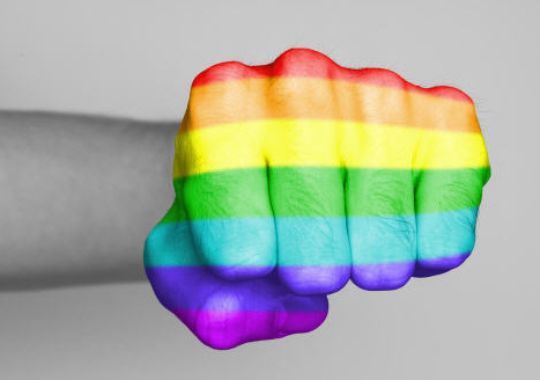
As many of you may know, October is domestic violence awareness month. Every year, those of us who find passion in working to end domestic violence come together to promote awareness by hosting events, writing articles, and leading campaigns such as #TakeAStand. Slightly less known, is that October is also LGBT History Month. Unfortunately, October is not the only time of the year that domestic violence and LGBT relationships come together.
Throughout the movement for LGBTQ human rights and liberation, many of us have felt a pressure to not “air the dirty laundry of our communities.” This is often a common experience for individuals and groups of people who are fighting to be recognized in a society. The pressure is that, if we can just make the broader society aware of the good things that come from our group, they will accept us. Unfortunately, this often creates an additional barrier to those of us who may need to seek services for experiences that are often stigmatized such as mental health struggles or partner violence.
The truth is, research suggests that domestic violence impacts LGBTQ individuals at rates equal to or higher than those of cisgender heterosexual women (25-35 percent). Despite these numbers, the majority of individuals seeking services appear to be cisgender, heterosexual women. For those working in the field of violence prevention, this will come as no surprise. There are many barriers that prevent individuals from seeking services and even more when they identify with a traditionally marginalized gender identity and/or sexual orientation.
If I were seeking services for domestic violence as a bisexual genderqueer person, there are certain barriers that I would be concerned about. For example, research suggests that police are less likely to properly handle a domestic violence situation in a same gender relationship. It is also more likely that the police will arrest both parties in the situation, due to the perceived difficulty of identifying the primary aggressor in the situation. Many times, police fail to understand the relationship in the context of a domestic violence situation and simply view it as harassment or an isolated altercation. If the police are the initial point of contact, I may already feel that I will not be believed or supported and may not continue to seek services.
Many of the services available to domestic violence survivors include using the legal system. As we know, the legal system doesn’t have the best history of supporting LGBTQ individuals. Furthermore, to benefit from any of the services offered by the legal system you are required to share personal information about yourself and your relationship. If you are seeking a protection order, you are ultimately asked to come out to the open court. For people who are not out, this alone could prevent them from seeking any services. It is hard enough to come out when you are single or in a healthy relationship, but to be asked to come out when you are not ready in order to seek services to help you get out of an abusive relationship is a task that not many people could endure.
Other common barriers faced by LGBTQ individuals who are seeking services for domestic violence are that they are more likely to share the same support system as their abuser, the abuser may blame the abuse on the survivor’s identity, and if the survivor is not a women, they may feel that nobody will believe them. Unfortunately, this is an added layer of barriers on an already difficult thing to do. There are many barriers that LGBTQ individuals face when seeking any services. For example, many transgender people experience what is known as “master status,” which consists of providers working with the assumption that every difficulty the person faces is based on their gender identity. Other barriers to general services include fear of or actual heterosexism and discrimination, lack of visibility among service providers, or a lacking access to services due to economic oppression.
I write this article, not to scare other LGBTQ folks from coming forward with their stories or seeking services, but to continue the conversations on how to better serve LGBTQ victims and survivors of domestic violence and sexual assault. I think it is important for service providers to understand the unique ways in which LGBTQ people are discouraged from seeking services, so that we can develop strategies and alternate services that will better serve the population. I also am writing this article to encourage the thousands of LGBTQ survivors who have shared their stories to continue to do so without fear of airing dirty laundry and tarnishing the image of the LGBTQ movement. Every time I read or hear a story similar to mine, I feel slightly more validated and empowered. I also become a better counselor, advocate, and feel more confident training my colleagues on these issues.
In closing, I want to share the importance I find in commemorative and awareness months. While some people don’t think it has much meaning to dedicate a month to domestic violence awareness or LGBT history, I think it goes a long way. Every year, I watch a community of people come together to send a message that we don’t tolerate domestic violence and we’re going to stand with victims. While I think this needs to happen more than once a year, I find even these small messages to be very empowering and hopeful. To me, celebrating LGBT history month means the same thing. It means sending a message to people that we’ve always been here and we have our success stories. Lastly, I think the community wide events that these commemorative months inspire bring us one step towards our end goal of justice and liberation.
